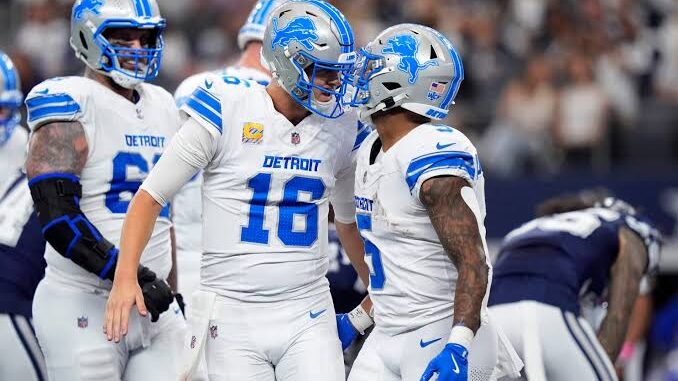
The Minnesota Vikings’ defense faced a significant challenge in their recent matchup against the Detroit Lions, whose high-octane offense has been a force in the NFL this season. Despite the Vikings’ reputation for defensive prowess, their inability to contain the Lions exposed critical weaknesses that could haunt them as the season progresses.
The Lions entered the game with the top-ranked offense, led by quarterback Jared Goff, who has demonstrated an impressive ability to distribute the ball effectively to a talented array of receivers. The Vikings struggled to apply pressure, allowing Goff ample time to execute plays. The defensive line, which has been a cornerstone of the Vikings’ strategy, failed to capitalize on its matchups, contributing to a lack of sacks and hurried throws. This stagnation in the pass rush allowed Goff to settle into a rhythm, which proved disastrous for Minnesota.
In the secondary, the Vikings appeared vulnerable. Lions wide receivers Amon-Ra St. Brown and rookie Sam LaPorta exploited mismatches, consistently finding space to make plays. St. Brown’s ability to create separation highlighted the Vikings’ struggles in man-to-man coverage. Additionally, communication breakdowns and missed tackles compounded the issues, leading to significant yardage gains after receptions. The Lions’ offensive strategy, which included a mix of short, quick passes and deeper shots, kept the Vikings guessing and unable to mount a cohesive defensive effort.
Linebackers, often pivotal in containing the run and providing support in pass coverage, also had an off day. The Vikings’ inability to stop the Lions’ running game meant they couldn’t force Detroit into predictable passing situations. The Lions’ success on the ground not only controlled the clock but also opened up play-action opportunities that further exploited Minnesota’s defensive lapses.
Furthermore, coaching decisions also raised eyebrows. The Vikings’ defensive scheme seemed ill-suited to counter the Lions’ approach, lacking the adjustments necessary to disrupt their momentum. As the game unfolded, it became increasingly clear that the Vikings needed to adapt, yet their defensive coordinator failed to make the necessary changes in real time.
In conclusion, the Vikings’ defense, typically a hallmark of their team identity, was overwhelmed by the Lions’ explosive offense. Their struggles in pass rush, secondary coverage, and overall game management exposed vulnerabilities that must be addressed if the Vikings hope to remain competitive in a season where offensive prowess is paramount. Without significant improvements, the Vikings risk falling further behind in a league that increasingly rewards offensive firepower.
Leave a Reply